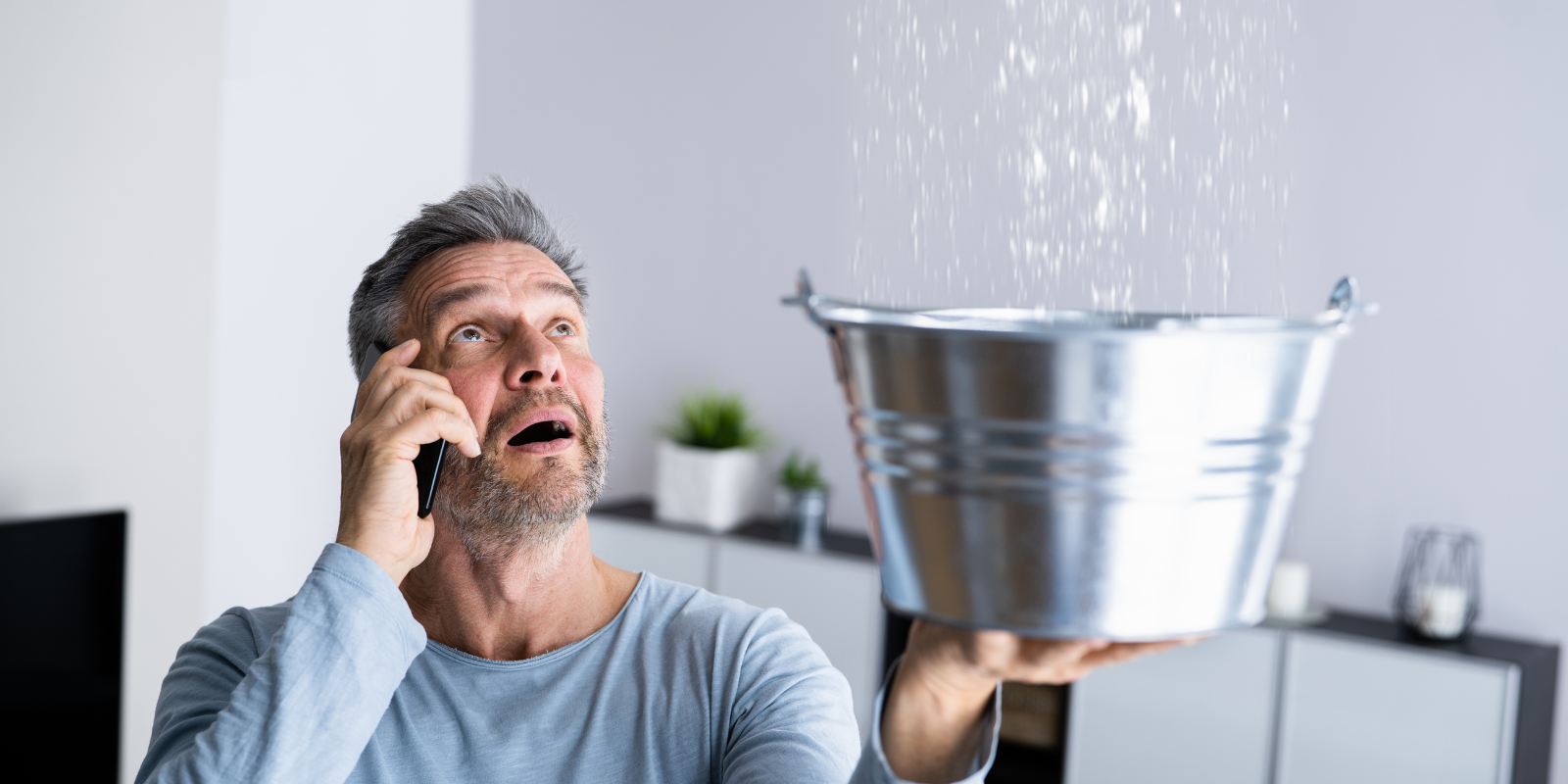
Top 20 Examples Of Water Damage To Look Out For
Water damage is a pervasive issue that can wreak havoc on homes and businesses alike.
Understanding the common forms, costs of repairs, and effective solutions is crucial.
In this comprehensive guide, we delve into the top 20 common forms of water damage, explore the expenses associated with fixing water damage, provide insights into common rates, share essential facts, and present effective solutions to tackle this problem head-on.
Top 20 Common Forms of Water Damage
Burst Pipes: Burst pipes are a frequent cause of water damage, leading to immediate and severe destruction within a property.
Roof Leaks: Leaky roofs can result in water infiltration, damaging ceilings, walls, and personal belongings.
Flooding: Natural disasters, such as floods, can cause extensive and sudden water damage to homes and businesses.
Appliance Leaks: Faulty appliances, like dishwashers or washing machines, can cause slow but continuous water damage over time.
Foundation Cracks: Cracks in a building’s foundation can allow water to seep in, leading to structural issues and potential mold growth.
Clogged Gutters: Blocked gutters prevent proper drainage, causing water to overflow and damage the exterior and interior of a property.
Sewer Backups: Sewer backups can result in contaminated water entering a property, causing significant damage and health hazards.
HVAC System Issues: Malfunctions in heating, ventilation, and air conditioning systems can lead to water leaks and subsequent damage.
Faulty Plumbing: Plumbing issues, such as leaks, burst pipes, or damaged seals, can cause water damage throughout a property.
Leaking Windows: Improperly sealed or damaged windows can allow rainwater to enter, leading to water damage over time.
Basement Leaks: Basements are prone to leaks, especially in areas with high groundwater levels, resulting in water damage.
Cracked or Damaged Roofing: Roofing materials that are cracked or damaged can allow water to seep into the attic and other parts of the home.
Poorly Sealed Doors: Inadequately sealed doors can permit water entry, especially during heavy rain or storms.
Water Heater Leaks: A leaking water heater can cause both immediate and long-term water damage if not addressed promptly.
Leaking Radiators: Radiators or heating systems that leak water can lead to damage to floors, walls, and nearby structures.
Malfunctioning Sump Pumps: Sump pump failures can result in water accumulation in basements, leading to damage and potential flooding.
Ice Dams: In cold climates, ice dams on roofs can cause water to back up under shingles, causing damage to the roof and interior.
Cracked Foundations: Structural issues, such as cracks in the foundation, can allow water to infiltrate and compromise the integrity of the building.
Leaking Dishwashers: Faulty dishwashers can leak water, causing damage to kitchen floors and surrounding cabinets.
Inadequate Drainage: Poor landscaping or inadequate drainage systems can result in water pooling around a property, leading to damage over time.
Interesting Facts About Water Damage
Annual Water Damage Claims: On average, there are over 14,000 water damage claims filed daily, emphasizing the frequency and widespread impact of water-related incidents.
Percentage of Homeowners Affected: Approximately 37% of homeowners in the U.S. have experienced losses due to water damage, highlighting the pervasive nature of this issue.
Cost of Water Damage Restoration: The average cost of water damage restoration in the U.S. ranges between $2,000 and $5,000, with more severe cases exceeding $10,000, underscoring the financial impact on affected individuals.
Leading Cause of Home Insurance Claims: Water damage is the second most common cause of home insurance claims in the U.S., following wind and hail damage, accounting for a significant portion of insurance payouts.
Percentage Increase in Water Damage Claims: Over the past decade, there has been a 45% increase in water damage claims, signaling a growing trend that necessitates heightened awareness and preventive measures.
Percentage of Water Damage Caused by Plumbing Failures: Plumbing failures contribute to nearly 50% of all water damage incidents in homes, making it a primary source of concern for homeowners and insurers alike.
Average Litigation Costs for Water Damage Disputes: Legal disputes related to water damage can incur an average cost of $50,000 to $100,000, showcasing the potential legal ramifications and financial burdens associated with unresolved cases.
Percentage of Basements Prone to Water Damage: Over 60% of basements in the U.S. are prone to water damage, with basement flooding being a common and costly occurrence.
Increased Risk in Coastal Regions: Coastal regions experience a 25% higher risk of water damage, attributed to the increased likelihood of storms, hurricanes, and rising sea levels.
Impact of Quick Response on Costs: Acting within the first 24-48 hours of water damage can reduce restoration costs by up to 40%, emphasizing the importance of swift and efficient intervention.
Importance of Quick Response
Swift action is paramount; delaying water damage repairs can exacerbate the issue, leading to higher costs and more extensive damage.
Top 5 Solutions to Water Damage
Emergency Mitigation: Swift and effective emergency mitigation is crucial in minimizing water damage. This includes actions such as promptly extracting standing water, drying affected areas, and removing damaged materials. Fast response significantly reduces the potential for further harm.
Professional Restoration Services: Engaging professional water damage restoration services is essential for comprehensive repairs. Certified professionals have the expertise, equipment, and knowledge to assess the extent of damage, address structural issues, and restore the property to its pre-damage condition.
Mold Prevention: Mold is a common consequence of water damage and can pose serious health risks. Implementing effective mold prevention measures, such as thorough drying, dehumidification, and the use of antimicrobial treatments, helps mitigate the growth of mold and safeguard indoor air quality.
Proactive Maintenance: Regular maintenance of a property’s key systems, including plumbing, roofing, and appliances, can prevent potential water damage. Conducting routine inspections, fixing leaks promptly, and ensuring proper drainage are proactive measures that can save homeowners from future water-related issues.
Investing in Water Detection Systems: Installing water detection systems, such as leak detectors and alarms, provides an early warning of potential water damage. These systems can alert homeowners to leaks or excess moisture, allowing for timely intervention before significant damage occurs.
FAQs
What Causes Water Damage? Water damage can be caused by various factors, including leaks, floods, burst pipes, roof issues, and faulty appliances. Identifying the specific cause is crucial for effective remediation.
Is Water Damage Covered by Insurance? Insurance coverage for water damage varies. It’s essential to carefully review your insurance policy to understand the extent of coverage and any exclusions related to water damage.
How Can I Prevent Water Damage in My Home? Preventing water damage involves regular maintenance, prompt repairs of leaks, proper drainage, and installing safeguards like sump pumps. Taking proactive measures is key to avoiding potential issues.
Are All Types of Water Damage Covered Equally by Insurance? Insurance policies may differentiate between types of water damage. For instance, sudden and accidental damage might be covered differently than gradual damage or flooding. It’s vital to understand these distinctions.
Can I Repair Water Damage Myself? While minor water damage issues might be manageable for DIY repairs, extensive or hidden damage often requires professional intervention. Water damage experts have the tools and expertise to address the problem comprehensively.
How Quickly Should I Respond to Water Damage? Time is of the essence when it comes to water damage. Swift response within the first 24-48 hours is crucial to mitigate further damage and prevent mold growth. Delaying repairs can result in more extensive and costly issues.
What Are the Health Risks Associated with Water Damage? Water damage can lead to mold growth, which poses health risks such as respiratory issues and allergies. It’s essential to address water damage promptly to safeguard both property and health.
Can Water Damage Affect the Structural Integrity of My Home? Yes, water damage can compromise the structural integrity of a building. Foundation cracks, rot, and weakened materials are common consequences of prolonged water exposure. Timely repairs are essential to prevent structural issues.
Are There Any Warning Signs of Potential Water Damage? Warning signs include visible leaks, water stains on walls or ceilings, a musty odor, and peeling paint. Regular inspections and addressing these signs promptly can prevent more significant problems.
How Often Should I Check for Potential Water Damage in My Home? Regular checks for water damage are advisable, especially after severe weather events. Additionally, routine inspections, such as checking plumbing, roofing, and appliances, can help identify and address potential issues before they escalate.
If you have any questions about our article, “Top 20 Examples Of Water Damage To Look Out For” or need water damage restoration services feel free to call us at 1-833-WE-DRY-IT any time 24/7/365 or chat with us on LiveChat or social media.
Related Posts
Fire Damage Restoration Articles
The Dos And Don’ts Of Commercial Fire Damage
Forest Fire House Damage: What To Do After Your House Is Damaged By A Forest Fire And Who to Call?
Fire prevention tips for the summer
How to clean up after a house fire
Fire damage restoration checklist
Fire damage tips: 6 hazards property owners miss
How smoke from fires can negatively affect your health
What are the most common causes of house fires?
10 helpful smoke damage cleaning tips
Mould Removal Restoration Articles
Is Bathroom Mould Dangerous? Powerful Mould Prevention Tips Inside
Dangers Of Bathroom Mould And Tips On How To Clean And Prevent It
Got Bathroom Mould? Here Are Some Must-Know Bathroom Mould Cleaning Tips
5 Signs You Have Mould Growing In Your Walls
“Can I Remove Mould Myself?” Our Mould Removal Experts Have Answers
7 Must-Know Reasons Why You Should Get A Mould Inspection Before Buying A House
Does Mould Attract Bugs? Yes And Here’s What Kind And Why
How To Remove Mould From The Attic [Mould Prevention Tips Inside]
How Rain Causes Mould Growth-Prevention Tips Included
Must-Know Tips: How To Remove Mould In Your Basement
Water Damage Restoration Articles
How to prevent home storm damage
What you can expect from a fire damage restoration company
Water damage prevention tips from the most common problems we’ve seen
Top causes of water damage in commercial buildings and how to find them
Must-know water damage tips: What to do after your house floods
What does good water damage restoration look like?
DIY water damage restoration and the hidden dangers
How to choose the right water damage company
Flast floods: What to do before, during and after a flash flood
What to do when your attic leaks?
This is why water damage is a silent home killer
Related Water Damage Services
Fire damage restoration services
Water damage restoration services
Emergency cleanup services
Mould removal services
Weather damage services

